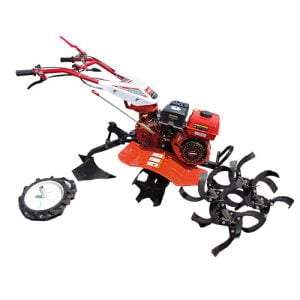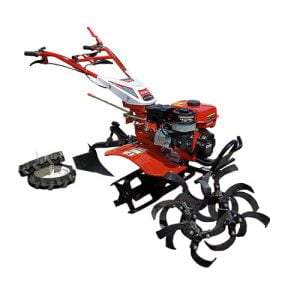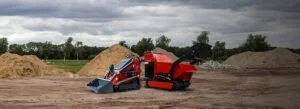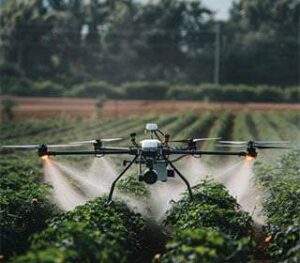Exploring the Benefits of Push Tractors in Modern Farming
Introduction

In the dynamic landscape of modern agriculture, technological advancements continually reshape farming practices to optimize efficiency and productivity. One such innovation gaining momentum is the push tractor. This article delves into the multifaceted benefits of push tractors in contemporary farming, exploring their impact on various aspects of agricultural operations.
Understanding Push Tractors: A Brief Overview
Before delving into their benefits, let’s grasp the fundamentals of walking tractors. These machines, also known as walk-behind tractors, differ from traditional tractors in their design and functionality. Unlike conventional tractors, which are typically driven, walking tractors are manually operated or equipped with electric motors. Their compact size and versatility make them ideal for small to medium-sized farms and diverse agricultural tasks.
Enhanced Maneuverability and Versatility
One of the primary advantages of walking tractors lies in their enhanced maneuverability. Their compact design allows farmers to navigate through tight spaces and maneuver around obstacles with ease. Whether tilling narrow rows, cultivating between crops, or performing precision tasks in confined areas, walking tractors offer unparalleled versatility, optimizing operational efficiency.
Increased Sustainability and Environmental Benefits
In an era marked by growing environmental concerns, sustainability has become a pivotal focus in agriculture. Walking tractors align with this ethos by offering eco-friendly alternatives to conventional machinery. Their manual or electric operation reduces reliance on fossil fuels, minimizing carbon emissions and environmental footprint. Additionally, their precise operation minimizes soil compaction, preserving soil health and promoting sustainable farming practices.
Enhanced Affordability and Accessibility
Cost-effectiveness and accessibility are crucial considerations for farmers, particularly those operating on smaller scales. Walking tractors present an affordable alternative to large-scale machinery, making mechanization accessible to a broader demographic of farmers. Their relatively lower upfront costs, coupled with reduced maintenance and operational expenses, contribute to long-term savings, enhancing the economic viability of farming operations.
Improving Ergonomics and Operator Comfort
Farming is physically demanding work, often involving prolonged hours of manual labor. Walking tractors address this challenge by prioritizing ergonomics and operator comfort. Their ergonomic design reduces strain on the operator, minimizing fatigue and increasing productivity. Furthermore, advancements in ergonomics, such as adjustable handles and cushioned seats, enhance user experience, making farming tasks more comfortable and sustainable in the long run.
Integration with Precision Agriculture Techniques
In the era of precision agriculture, technology plays a pivotal role in optimizing farming practices. Walking tractors seamlessly integrate with precision agriculture techniques, offering precise control and accuracy in various tasks. Whether implementing variable rate applications, GPS-guided navigation, or data-driven decision-making, push tractors enhance operational efficiency and enable farmers to maximize yields while minimizing input costs.
Comparison of Push Tractors with Conventional Tractors

| Feature | Push Tractors | Conventional Tractors |
|---|---|---|
| Maneuverability | Enhanced maneuverability in tight spaces | Limited maneuverability in confined areas |
| Environmental Impact | Reduced carbon emissions, eco-friendly | Higher carbon footprint, reliance on fossil fuels |
| Cost | Lower upfront costs, reduced operational expenses | Higher upfront costs, maintenance expenses |
| Ergonomics | Ergonomic design, operator comfort | Variable ergonomics, may cause operator fatigue |
| Precision Agriculture | Compatible with precision agriculture techniques | Limited integration with precision farming |
Conclusion
Push tractors represent a paradigm shift in modern farming, offering a myriad of benefits ranging from enhanced maneuverability and sustainability to affordability and operator comfort. As agriculture continues to evolve, embracing innovative technologies like push tractors is imperative for farmers seeking to optimize productivity, minimize environmental impact, and ensure long-term sustainability.
FAQ
Q:Are push tractors suitable for all types of farming operations?
A:Push tractors are particularly well-suited for small to medium-sized farms and diversified cropping systems. While they excel in tasks such as tillage, cultivation, and seeding, their suitability may vary depending on specific farming practices and scale of operations.
Q:What are the maintenance requirements for push tractors?
A:Maintenance requirements for walking tractors are generally minimal compared to larger machinery. Regular checks of engine components, lubrication of moving parts, and cleaning are recommended to ensure optimal performance and longevity.
Q:Can push tractors be used for organic farming practices?
A:Yes, push tractors align well with organic farming practices due to their minimal environmental impact and reduced reliance on synthetic inputs. Their precise operation allows for effective weed control and soil management without the use of chemical herbicides or pesticides.
Q:Are push tractors suitable for hilly or uneven terrain?
A:While push tractors are versatile machines, their performance on hilly or uneven terrain may be limited. In such conditions, it’s essential to consider factors such as stability, traction, and slope gradients to ensure safe and efficient operation.
Q:What are the key considerations when purchasing a push tractor?
A:When selecting a push tractor, factors such as engine power, attachments compatibility, ergonomic features, and after-sales support should be taken into account. Additionally, assessing specific farming needs and operational requirements will help determine the most suitable model for your farm.



